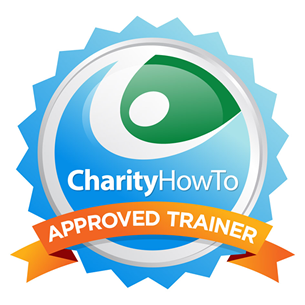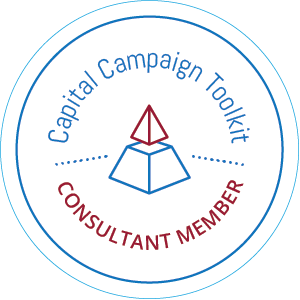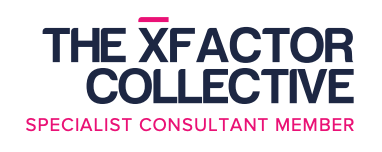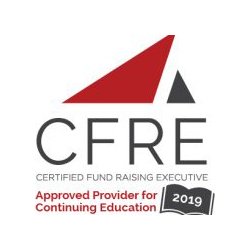Last week, I noted how all-volunteer and small staffed organizations must engage i![]() n governance at the Board level. I pointed out that one of the first steps is to secure commitment to change. Some groups may not want to change and need to wrestle with the question of “what does not changing mean for our organization?” You can read that article here.
n governance at the Board level. I pointed out that one of the first steps is to secure commitment to change. Some groups may not want to change and need to wrestle with the question of “what does not changing mean for our organization?” You can read that article here.
Others on the other hand do. So, after they gain consensus and commitment to changing, one of the next natural steps to creating this cultural shift on the board level is to look at the Board’s position descriptions. Now, I must say, this is where the dialogue gets quiet for my me and my client. For you see, I find that many have some form of a Board member expectation outline, simple as they may be, but lack a basic Board of Directors position description.
How can that be? I am not sure. I think that sometimes, perhaps groups don’t understand the full role of the Board and therefore don’t design a position description outlining the roles and responsibilities of a Board. On the other hand, some Boards by design, especially smaller nonprofit organizations, create Board positions to assist in getting the day-to-day organizational work complete, and the Board mainly functions as a management/volunteer rather than as a governance focused Board.
Just like in the “real” world, we wouldn’t expect to hire someone or to take a job that does not have a position description. The case is the same here. Why would we expect a Board member to come on Board without outlining for them their duties and responsibilities and sharing that with them? The Board holds one of the largest, if not THE most important role within an organization. In fact, the “buck” stops with the Board. How do you assess and release Board members if they or you haven’t defined that role for them?
And, we wonder why Boards are not functioning the way we want or expect them to. We haven’t begun to identify the parameters of what that work entails. We expect Board members to come on board fully engaged and knowing of their responsibilities, and when they don’t, we get frustrated and upset with our Board’s performance.
So, after seeking consensus and commitment, an organization must move to defining what a Board member’s role is and formalize and adopt this position description outlining functions and responsibilities. From there, you can design, based on the culture and needs of your organization, individual Board member expectations regarding their participation in a wide variety of organizational matters including, most importantly, fund development.
We all know that there is a difference between a Board of Directors as a collective unit and an individual Board member, right?
For more articles on your Board of Directors, start here!
P.S. – Are you ready to get started with your first large fundraising campaign? And, you want it to be successful? Get started with my FREE 7 Steps to a Majorly Successful Fundraising Campaign and use the EXACT same steps that I share with my clients. Click here to download your FREE 7 Steps “Cheat Sheet” and start planning your fundraising campaign today. I will share with you all the steps you need to be successful before launching your next campaign.

 So, many months ago, I set out and found a hill. I went up and down that hill over and over again. Then, searching online, I found mountain races. And, I entered them. And, I began running up to the summits of mountains. First smaller ones, and then larger ones. But, nothing greater than 3,000 or so feet.
So, many months ago, I set out and found a hill. I went up and down that hill over and over again. Then, searching online, I found mountain races. And, I entered them. And, I began running up to the summits of mountains. First smaller ones, and then larger ones. But, nothing greater than 3,000 or so feet. ith fundraising? Well, a great deal. Courage. I honestly believe that the most significant characteristic of a fundraiser is courage. These exceptional individuals know that even in the most difficult times, perseverance is key, and that “this too shall pass.” Courage to get a lot of “no’s” and to be able to ask for a gift without hesitation. It is the ability to do this, with rumblings and butterflies floating around in your tummy.
ith fundraising? Well, a great deal. Courage. I honestly believe that the most significant characteristic of a fundraiser is courage. These exceptional individuals know that even in the most difficult times, perseverance is key, and that “this too shall pass.” Courage to get a lot of “no’s” and to be able to ask for a gift without hesitation. It is the ability to do this, with rumblings and butterflies floating around in your tummy.


 messages that I subconsciously learned about money, and they helped to develop my now adult relationship with it.
messages that I subconsciously learned about money, and they helped to develop my now adult relationship with it. your territory. Use facial gestures that indicate happiness, open up your chest area, use hands to illustrate your words, etc.
your territory. Use facial gestures that indicate happiness, open up your chest area, use hands to illustrate your words, etc. When I surmise this is the case, I often ask, “Have you asked your donors?” And, the response is “No, how do you ask them?”
When I surmise this is the case, I often ask, “Have you asked your donors?” And, the response is “No, how do you ask them?” average of twenty cents per dollar raised to renew donors via direct mail? It costs about $1 to $1.25 to acquire a donor using that same method. That is five times more. And, on the converse, these new donors tend to give substantially less. It is much easier to upgrade an existing loyal donor to a higher level of giving.
average of twenty cents per dollar raised to renew donors via direct mail? It costs about $1 to $1.25 to acquire a donor using that same method. That is five times more. And, on the converse, these new donors tend to give substantially less. It is much easier to upgrade an existing loyal donor to a higher level of giving.
 important to not only look at internal things that will impact your fundraising success i.e. Board of Directors, etc., but it is also critical to examine external factors as well. Some external things that may affect the success of fundraising include political factors (i.e. election time), economic (a down economy), sociocultural (changing demographics), and technology (changes in the web, social media, etc.). Development audits also tend to examine others in the industry including nonprofits serving the same type of causes, similar sizes, potential collaborators, and other market factors).
important to not only look at internal things that will impact your fundraising success i.e. Board of Directors, etc., but it is also critical to examine external factors as well. Some external things that may affect the success of fundraising include political factors (i.e. election time), economic (a down economy), sociocultural (changing demographics), and technology (changes in the web, social media, etc.). Development audits also tend to examine others in the industry including nonprofits serving the same type of causes, similar sizes, potential collaborators, and other market factors).





